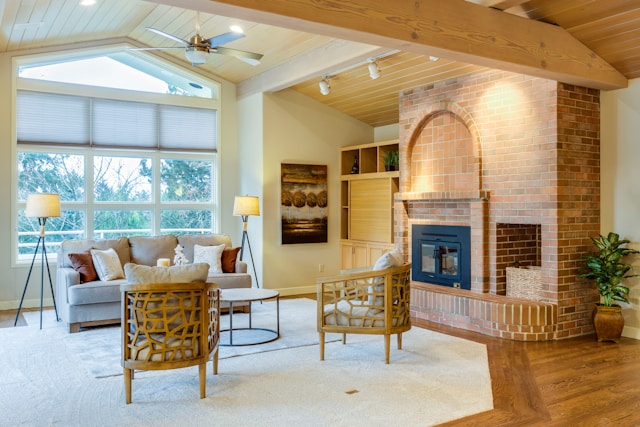The Impact of Lighting on Interior Design
Key Takeaways:
- The strategic use of lighting can profoundly affect the ambiance of a home and influence perceptions of space.
- Color temperature and the layering of light play vital roles in interior design aesthetics and functionality.
- Contemporary lighting trends emphasize energy efficiency, technological integration, and innovative designs.
- Awareness and avoidance of common lighting design mistakes can improve the home environment.
- Seeking insights from design experts and integrating smart technology can enrich the ambiance of any space.
Table of Contents:
- Introduction to Home Lighting and Design
- The Evolution of Home Lighting Trends
- Decoding the Color Temperature Spectrum
- Balancing Function and Fashion in Lighting Choices
- The Art of Layering Light in Interior Design
- Smart Lighting: Integration with Home Automation
- Energy Efficiency and Sustainable Lighting Solutions
Introduction to Home Lighting and Design
Consider the transformative power of lighting—it’s an essential utility, a significant mood influencer, and an aesthetic enhancer. Thoughtfully placed lighting can turn a backyard into an enchanted niche, just as aptly chosen interior fixtures can transform a mundane room into a sophisticated parlor. Lighting encompasses functional necessity and extends its role to a silent yet persuasive conductor of ambiance and mood within the home.
The conscientious application of lighting fixtures, from the gentle bedside lamp to the imposing chandelier, resonates with our innate desire for warmth and illumination. We’re instinctively drawn to well-lit spaces, such as outdoor lighting Kansas City residences, which can make us feel safe and grounded or spirited and imaginative, depending on the intensity and quality of light. Let’s explore how an understanding of lighting can not only light up our rooms but also, quite literally, light up our lives.
The Evolution of Home Lighting Trends
Much like fashion, home lighting is a narrative of eras and innovations. From the practical beginnings when practicality reigned supreme to a period when ornate fixtures signaled luxury and status, the humble light bulb’s journey is storied. It paints a picture of technological advances and sociocultural shifts in what we value in our personal spaces. The trend pendulum has swung towards lighting that encapsulates sustainability, minimalism, and flexibility.
Capitalizing on technology and design, contemporary trends in lighting fixtures strive to make a statement. They serve dual purposes—shaping the room’s atmosphere while performing as eye-catching art pieces. These fixtures are no longer inanimate objects but dynamic components of living spaces, adapting in form and function to modern lifestyle demands. They harmonize with architectural features, silently enhancing the design narrative of the homes they illuminate.
Decoding the Color Temperature Spectrum
The light spectrum emitted by a bulb can make a world of difference in a room. Color temperature, measured in Kelvins, is a scale that ranges from warm yellow tones to cold blue ones. Lower temperatures provide a warm, cozy glow suitable for a relaxing evening, while higher temperatures emit a brighter, energizing light conducive to concentration and task completion. Hence, the color temperature of the lighting chosen can transform the utility of a room, influencing the tones and feelings it evokes in its inhabitants.
Balancing Function and Fashion in Lighting Choices
The lighting within a home must serve its primary function—visibility. Yet, savvy designers know that well-chosen lighting fixtures can serve as decor in their own right. It’s a delicate dance between form and function where a fixture must provide adequate light while integrating seamlessly with the home’s aesthetic vision. Achieving such a balance often involves selecting lighting that accentuates architectural details, complements textures, and provides a fluid continuity of style throughout the home.
The fusion of practicality with aesthetic allure can be challenging. But when successfully executed, lighting can exponentially enhance a space’s charm and functionality. Underutilized corners can be invigorated with wall sconces, while the character of a kitchen can be illuminated with a combination of recessed lighting and stylish island pendants. Thus, intelligent lighting choices can convert a mere space into an experience for all the senses.
The Art of Layering Light in Interior Design
Layering various types of lighting can transform a singular, static light source into a multifaceted, dynamic ambiance. This technique utilizes ambient light as the base, providing a consistent illumination level throughout a room. It adds layers with task lighting, which caters to specific areas—like reading nooks—and accent lighting, which highlights your home’s unique features, such as art pieces or architectural elements.
Masterfully combined, these light layers can collectively create a cohesive and vibrant atmosphere adaptable to various activities and times. By considering each lighting type’s role, homeowners can curate an environment that evolves with their needs, accentuating the unique beauty and design of their living spaces.
Bright Lighting: Integration with Home Automation
Modern lighting has surpassed the simple flip of a switch. Home automation technologies now integrate lighting into their holistic control systems, offering homeowners unprecedented command of their environment. The emergence of smart lighting has seen the adaptation of fixtures that can be manipulated via smartphone or voice command, changing the intensity, color, and even the direction of light with arguably magical ease.
Energy Efficiency and Sustainable Lighting Solutions
The lighting industry is experiencing a sustainable revolution as more consumers consider their environmental impact. LED (light-emitting diode) technology has paved the way for lights that consume significantly less energy without sacrificing brightness or aesthetic quality. These sustainable solutions come in various designs, providing an eco-friendly alternative that aesthetically fits within any decorative theme.
The motives for choosing energy-efficient lighting extend beyond altruism; they carry practical benefits such as lower electricity costs and less frequent need for replacements. This translates to a profoundly positive impact on the household budget and the environment, a win-win situation in today’s increasingly eco-conscious world.

